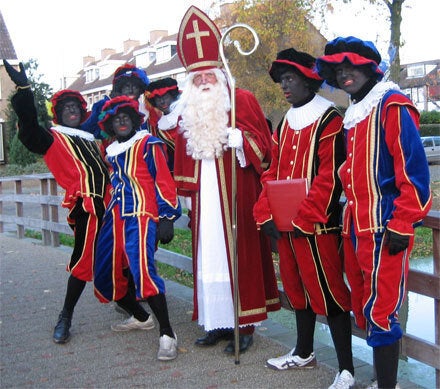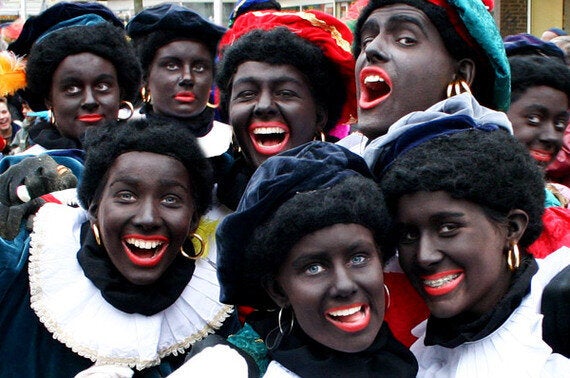Last weekend, a close friend called me in distress. She'd just had an uncomfortable situation at work.
Her colleague was going to the shops and out of courtesy, or so she thought, asked her if she wanted him to pick up anything. She declined and they continued to talk for a couple of minutes. Then just as he was leaving he said:
"Are you sure you don't want anything? Not even a banana?" and began laughing. He followed his laughter with "no racism, no racism."
Initially she responded with laughter, the comment had gone over her head, but almost immediately after he left she realised his intended implication.
Now my friend wasn't calling me to rant but to check. First, was his comment racist? We concluded that his eluding to her being a monkey, his laughter and professing his innocence were all indicators that it was. Once this was established, she wanted to know my opinion as a fellow young, black, female: did I think that she had the right to be upset?
This feeling of uncertainty in one's outrage is all too familiar. As a young black person I have regularly experienced situations similar to the above. The first couple of times I reacted with outrage. An outrage that those around me were quick to subdue. When I asked others for advice, as my friend was now asking me, I was encouraged to "just brush it off" or to "grow a thicker skin." Over the years I have begun to adopt this advice as my natural response. Increasingly these days I self-regulate, accepting these comments as "just a fact of life when you're brown/black." I've been hardened into acceptance.
But things we're different now that I was playing the role of advisor. The conversation reignited something in me.
My friend's distress was partly due to this being an alien experience to her. Up until this point she had not fallen victim to such a remark and therefore, despite being aware it happens, had never had to directly confront overt racism. This fresh distress reawakened my buried one.
It is ironic that this conversation happened on 5 December, for it is a day that will always hold special significance to me. It is the day of Pakjesavond; the largest celebration in Dutch culture and their present-giving equivalent of Christmas. For the most part, the celebrations echo those in the UK very closely; it is a time for family, presents and lots of food. However, there are also some differences. Living in the Netherlands between 2012 and 2013, I got to experience these differences first-hand.
I adapted to the majority of the differences - such as the earlier date, horses in place of reindeer and a protagonist named Sinterklaas rather than Father Christmas - with ease. However, there is one aspect of Pakjesavond that I did not embrace. In fact I was so opposed to it that, three years later, I still struggle.

Meet Sinterklaas' companions, Zwarte Pieten (Black Peter).
Unlike Father Christmas, Sinterklaas is accompanied by a band of black servants. First appearing in records in the 1850's, Zwarte Pieten were originally Santa's mean sidekicks, dishing out punishments to naughty children while Sinterklaas rewarded well-behaved ones. Since then, the characters personality has been reformed; they are now Sinterklaas' friendly, clown-like accomplices, dishing out sweets and gifts to admiring children. However, their black faces have survived this revival, the modern narrative now states that this is due to the soot gathered when climbing through chimneys to deliver presents. Although, with the exaggerated red lips painted onto their blackened faces and curly wigs upon their heads, they remain a not-so-distant relative of the 19th Century Blackface caricature.
Unsurprisingly, the Zwarte Pieten's blackness is a sensitive subject. It was one of the first things I was told, or rather warned, about when I announced that I was moving to the Netherlands. I was warned I wouldn't understand it. I was warned I would be offended. I was warned that it would probably make me quite upset. But mostly, I was warned to accept it. It is a Dutch tradition, held close to the Dutchman's heart. I, as a foreigner, should simply grin and bear it. Although with my curly Afro hair and black skin, it might be best if I don't wear red lipstick when doing so.
Despite the warnings, 5 December, and the days and weeks that surrounded it, still proved to be a major challenge for me. Although I was aware that people were going to don blackfaces, I couldn't help but be surprised by the scale of the practice. Children and adults alike wore their afro wigs, red lips and gold earrings with pride, shops were littered with golliwog-like figurines and even food outlets began to sell Zwarte Piet inspired produce. The few who did not directly participate, seemed to be spectating those who did joyously.


Sinteklaas and the Zwarte Pieten are well celebrated, attracting large crowds at parades.
The tradition is a fiercely defended one. So much so that a survey taken in 2013, whilst I was still living in the Netherlands, revealed that 92% of the Dutch public do not perceive Zwarte Piet as racist or associate him with slavery and 91% are opposed to altering the character's appearance.
When approval is that high, it is hard not to associate with supporters of the practice. Indeed, I soon found that many were people that I classified as friends.
I remember having many a debate on the subject, my friends were as vocal in their defence as I was in my disbelief. They too appealed to the notion of tradition, arguing that this was a practice that they had enjoyed since childhood, when their innocence and naivety preceded any notion of prejudice or discrimination. It was the same for their parents, and their parents before that. Zwarte Piet was not a man in blackface but a fantasy character, the equivalent of the tooth fairy or Easter bunny. These arguments often concluded with agreements to disagree, both parties being so passionate that it was impossible to reach a conclusion, but would always be reignited at a later date because I simply could not accept that people I respected and cared about could hold these opinions. It is a feeling of conflict that I still feel.
Being faced with racism from friends forces one to really think. When a stranger attacks you it is easy to reach the conclusion that it is wrong but when it is someone that you are invested in it is a lot harder. I found the lines between right and wrong being blurred.
For the first time, I was really forced to consider what constitutes racism, was it the act or the intention behind the act?
My friends repeatedly told me, and I fully accept, that their actions were not intended to offend me. In this sense, their intentions were pure. But do pure intentions excuse the act?
Lets re-visit my friends work incident. I think that her story is typical of many of the stories of Black Brits living in the UK. We are subjected to subtle racism, through snide comments and small everyday prejudices. This is why although her colleagues intentions were clearly not pure, he had intended to cause some form of offence to her, they did not shock me in the same way that Zwarte Piet does. I am confident that although we have seen a rise in public racism and hate crime in the UK, something like Zwarte Piet would not have survived the evolution of our society. I certainly can't imagine Prime Minister David Cameron publicly defending the practice, as the Dutch Prime Minister did when challenged just last year.
After much internal struggle I have come to the conclusion that neither parties are excusable in their racism. I thank my friend for making that phone call as she has inadvertently reignited in me my right to be outraged.
What do you think?